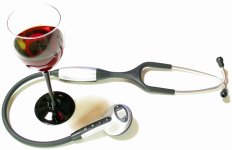
The South Beach Diet was developed in 1996 by Arthur Agatston, M.D., director of the Cardiac Prevention Center at Mount Sinai & Miami Heart. This is why the diet is also called “Mount Sinai South Beach Diet”.
The doctor could not choose any of the existing diets to help his patients improve their heart condition, so he designed an original one, based on his own analysis and taking into account previous research on nutrition of some dietitians. The diet was successfully followed by a number of Dr. Agatston's patients and is now part of Mount Sinai Clinic therapy and has proven to bring improvement on heart disease and diabetes.
Heart Disease
The most common cause of heart disease is the narrowing of the small blood vessels that supply blood and oxygen to the heart — the coronary artery disease. It usually occurs when fatty material and plaque build up on the vessels and arteries walls and thus the flow of blood to the heart or from the heart can slow or stop. The disease may induce chest pain (stable angina), shortness of breath, heart attack, or other symptoms.
Major risk factors
These factors cannot be changed:
- Old age
- Male gender — men have a greater risk of heart attack even at early ages
- Heredity — a family history of coronary heart disease is a major risk factor
There are also other major risk factors that can be changed:
- Tobacco smoke:
- increases blood pressure, decreases exercise tolerance and increases the tendency for blood to clot, because of the fat deposits associated with nicotine and carbon monoxide.
- decreases HDL (good) cholesterol.
- decreases the oxygen carried in the blood; its place is taken by carbon monoxide and other gases.
- increases the heart beat rate — the heart beats faster to get more oxygen from a greater volume of oxygen-poor blood.
- High blood cholesterol levels — cholesterol induces blood vessels narrowing and loss of elasticity.
- High blood pressure — increases the heart's workload, causing heart enlargement and weakening, over time inducing the risk of stroke, heart attack, kidney failure and congestive heart failure.
- Physical inactivity — leads to weakening of circulatory system functions. Regular, moderate exercise helps preventing heart and blood vessel disease.
- Obesity and overweight — excess weight increases the strain on the heart, influences blood pressure, cholesterol and triglyceride levels and increases diabetes risks.
- Diabetes
When some of these factors coexist, the risk of heart attack or stroke increases several times. These factors can be changed or treated so as to lower the risk by means of a healthy diet, lifestyle habits or medicine if needed.
The South Beach Diet is designed to help improve all these factors. The exceptions are smoking and physical inactivity. So quit smoking and start to exercise!
Recommending low saturated fat foods and promoting poliunsaturated and monounsaturated fats (found in olive and canola oils, peanuts and other nuts, peanut butter, and avocados) together with Omega-3 fatty acids (found in cold water fish), the South Beach diet leads to a decrease in LDL cholesterol level while maintaining levels of “good” HDL cholesterol.
The complex carbs and fiber intake from vegetables and whole grains is encouraged with the South Beach diet, fact which is beneficent for persons with high blood cholesterol and diabetes.
The weight loss that results from fat burn (especially during phase 1) is essential for a good heart health.
MedlinePlus has an excellent article on coronary heart disease.
The American Heart Association website has an article about Risk Factors for Coronary Heart Disease
Diabetes
Diabetes occur when the blood glucose is too high. Glucose comes from the food we eat. Insulin is a hormone made and released into the blood by the pancreas. It helps the glucose from food get into the body cells. If the secretion of insulin is too low or if the insulin doesn't work as it should, glucose can't get into cells and stays in the blood instead.
Some of the excess sugar is eliminated through urine. Thus kidney problems might appear, as the body waste cannot be filtered properly any longer.
High blood glucose levels damage blood vessels making the walls thicker and less elastic so blood has a harder time passing through. Also, diabetics tend to have higher fat levels in their blood because of the higher blood glucose. These fats or lipids clog and narrow the blood vessels partially or even completely resulting in atherosclerosis which can lead to heart attack, angina, stroke or painful legs.
Diabetes cannot be cured, however one can live a long, healthy life by controlling the blood sugar levels — eating right, exercising, maintaining a healthy weight and taking medicines if necessary.
A healthy diet is vital for diabetics. It should consist of three meals a day and never skip a meal. Foods must be varied, based on high fiber content — whole grains, vegetables and fruit. A very good way to control diabetes is to do the South Beach diet exercises under medical supervision. The Glycemic Index tool on which the South Beach Diet and diabetes is based can be very useful for blood glucose control in people with type 2 diabetes.
